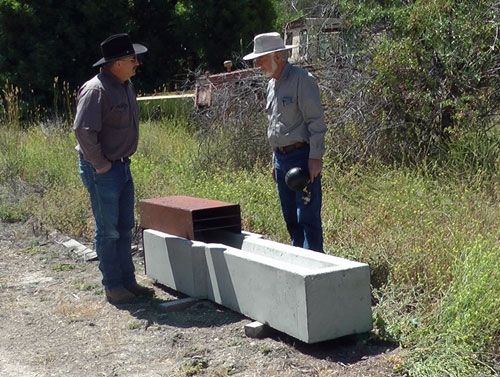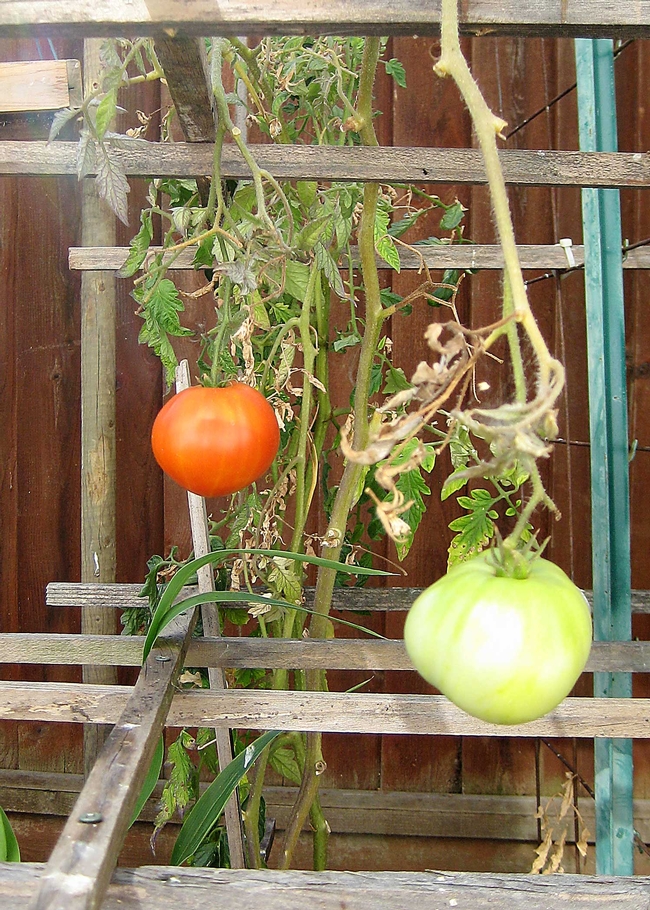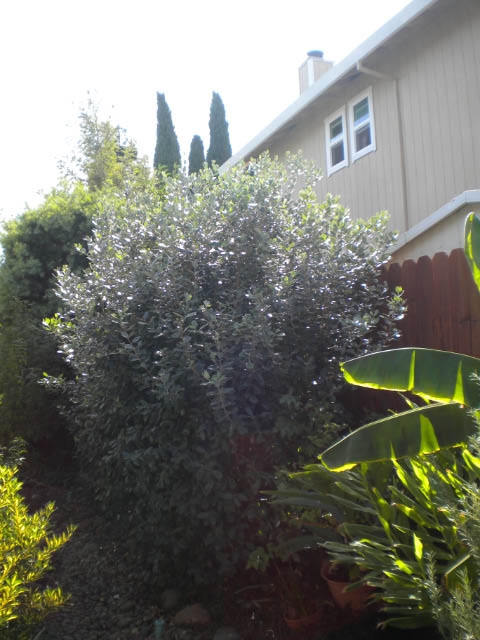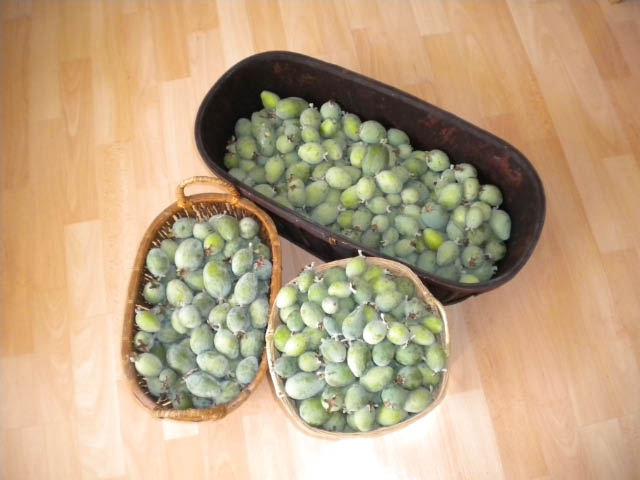UC Blogs
Building a better water trough
“Water is the driver of nature.” - Leonardo da Vinci
California’s vast dry rangelands are dotted with water troughs ideal for quenching cattle’s thirst. But in most cases, the troughs’ designs are a torment to wildlife drawn for a drink.
Monterey County rancher George Work observed how traditional water troughs frustrated the wildlife on his family’s 12,000-acre cattle ranch. Small birds couldn’t reach water two or three inches below the top edge. Coyotes, bobcats and cottontails weren’t tall enough to reach over the rim. Work set to making a water trough that would meet the needs of all animals on the range – from cattle, hunting dogs and horses to deer and rabbits.
While raising cattle remains the primary function of the Work Ranch, in order to generate more income from the scenic open space the ranch opens its doors to hunting wild boar, quail and Tule elk. The visitors enjoy seeing a diversity of wildlife.
“One-third of our business comes from wildlife,” Work said.
In 1998, Work drew from decades of first-hand experience to design a better water trough. With a grant from USDA’s Natural Resources Conservation Service, he constructed a prototype. The concrete trough is sunk into the ground under an elderberry tree. Work modified a float like those used in toilet tanks to keep the water within centimeters of the rim.
That first man-made watering hole was an improvement for many species, but it also revealed some problems. Birds needed an escape ramp to climb out of the water should they fall in while drinking; the ramp should be shallow enough to allow the birds to bathe. Larger animals had to be kept from using the trough for a cooling dip. Work found that sloping the sides to a sharp V at the bottom of the trough made it unappealing for a soak.
Years of experimentation and innovation resulted in the development of pre-manufactured concrete water troughs, which are now commercially available. The next challenge is selling the idea to ranchers.
Enter UC Cooperative Extension. On an unrelated visit to the Work Ranch, UC Berkeley wildlife biologist Reg Barrett was impressed by Work’s invention and encouraged UC Cooperative Extension rangeland advisor Royce Larsen and NRCS rangeland conservationist Karl Striby to help spread the word.
Larsen and Stirby are now completing the first step, adding the ground-level water trough specifications to NRCS's published Technical Notes. The publication will provide ranchers and other land owners with the information they need to install the wildlife-friendly troughs.
“If you’re thinking of installing a basic, traditional trough for cattle, it may or may not be the best idea,” Larsen said. “But you’re thinking about supporting both cattle and wildlife, it’s great.”
In the video below, rancher George Work shows the ground-level water trough prototype and the second-generation, pre-manufactured version.
Groundlevel640
Maybe Gardener
As I write this blog entry, November is four days away. At this time in a normal weather year, the summer vegetables would be done and gone. I would have removed the summer plants and tucked in the garden until next spring. We all know 2011 not been a normal weather year.
I have cleaned out the dried and broken corn stalks, the zucchini vines that shrived into spiny twine, and the tomato plants - except the one last tomato plant that still has two great tomatoes. I could not bring myself to rip it from the ground.
I know the plant looks ridiculous - especially since I pruned back most of the spent leafless branches and the rest of the bed is empty.
I know the last two tomatoes will probably not taste anything nearly as good as the sweet delicious globes we harvested in August.
I know the frost will be here faster than you can say “Under the Solano Sun” and the plant will be finished for sure.
But for some reason this year, holding on to one last bit of summer seems to be helping me ease into the short and dark days of fall and winter. I look out the kitchen window and see the bright red tomato ripening and it makes me smile. And the tomato plant is holding on to summer, too. There is cluster of new flowers opening on the other side of the plant.
I was told a compassionate gardener would let the plant go after a long season of producing tomatoes. Maybe I am being a selfish gardener by keeping the plant in the garden. Maybe I am being a compassionate gardener by allowing the plant to fulfill its productive destiny. Maybe I am an experimental gardener by growing beyond the normal season! Maybe if I get some plastic sheeting and grow lights… or, maybe not.
In Pursuit of Ants
Ants are such tiny critters. But they're much more than that. Much more. Ant specialist Brian Fisher, an entomologist with the California Academy...
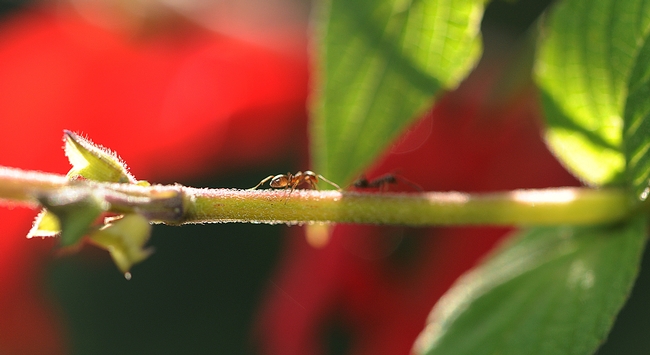
Ants crawl along a vine. (Photo by Kathy Keatley Garvey)
UC farm advisor recognized for contributions to ag
UC Cooperative Extension farm advisor Joseph Connell was honored this week for his career-long contributions to Butte County agriculture, according to the Chico Enterprise. He was one of four community leaders recognized as part of the annual Farm City Celebration.
The Farm City Committee acknowledged Connell's broad range of scientific, practical and professional competence and his fairness. Connell began his UCCE career in 1977 and moved to Butte County in 1980, where he has been responsible for almonds, walnuts, olives, citrus and ornamentals.
Gold Spotted Oak Borer infesting oak trees in So Cal
Angela Meyers, Big Bear News
Although the limited number of oaks in Big Bear mean the Gold Spotted Oak Borer doesn't pose a serious threat in the community, the local newspaper advised its readers that trees in nearby Yucaipa and Live Oak are in danger. The story suggested readers interested in more information visit UC ANR's Gold Spotted Oak Borer website.
Farm Smart starts corny lessons for local students
Elizabeth Varin, Imperial Valley Press
The UC Desert Research and Extension Center is kicking off its new season of Farm Smart, which educates students about natural and renewable resources, including agriculture. The program combines hands-on activities, such as visiting a corn maze and making corn starch plastic, with historical lessons, on such topics as the uses of bandanas and traditions behind hoedowns, said Nancy Caywood Robertson, education outreach coordinator for the Farm Smart program.
“Our No. 1 rule is they have to have fun,” she said. “Are you having fun?” she asked the crowd.
Fabulous Feijoa
I have had a bumper crop of pineapple guavas, Feijoa sellowiana, this year. Originally from South America, these drought tolerant shrubs do well in our climate. They can grow up to fifteen feet high and wide, but with the annual pruning they get for our Wreath Workshop the ones in my yard don't quite make that. The leaves are a leathery green on top and a silvery gray underneath. They bloom in early summer. The fruit are ready between October and December and you know it's ripe when they fall on the ground. You just gather them up off the ground and clean them off.
The fruit are 1-2 inches long , dull green on the outside. They are neither pineapple or guava related, but someone thought they tasted like a cross between the two flavors. When I first started growing them about 20 years ago recipes were few and far between. Now on the Internet I've been able to find quite a few. We like the jam, muffins, chutney, and salsa the best, but I've also seen recipes for shrimp dishes and even ice cream.


